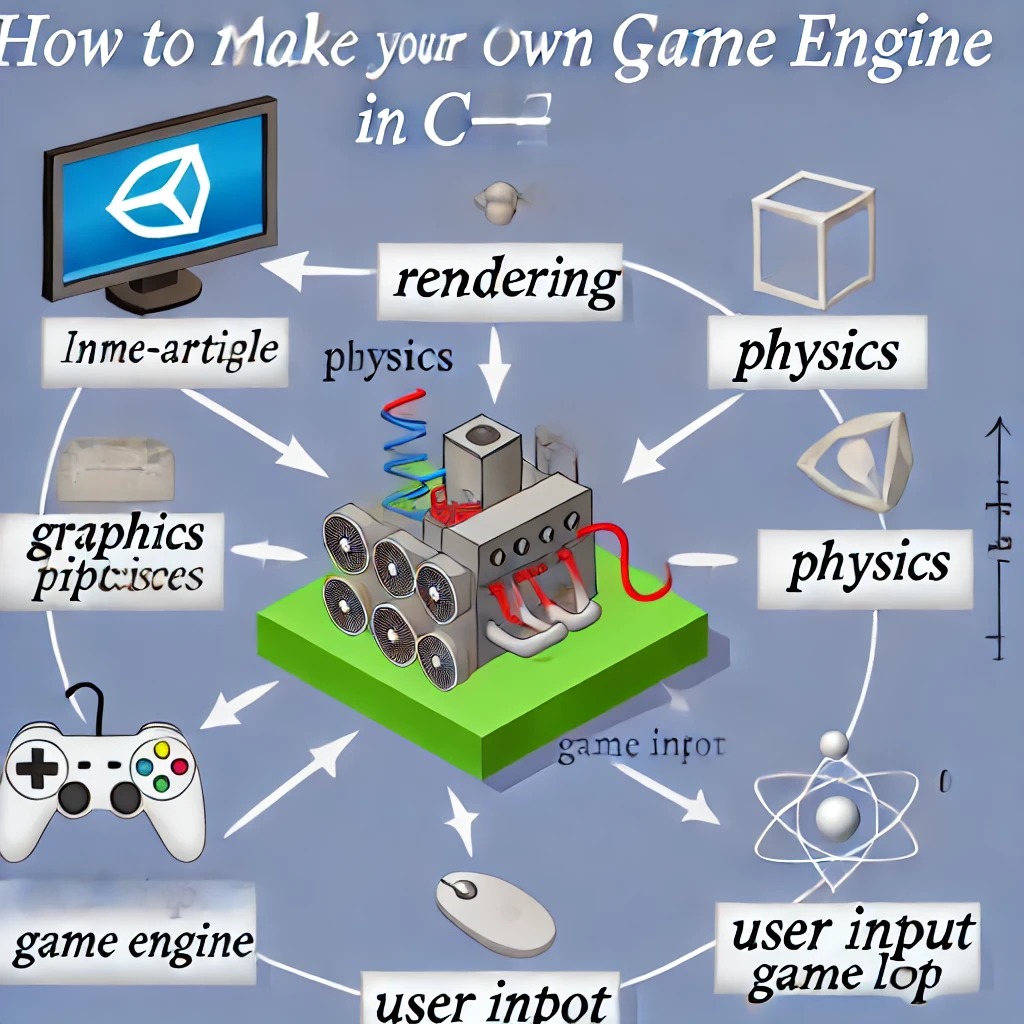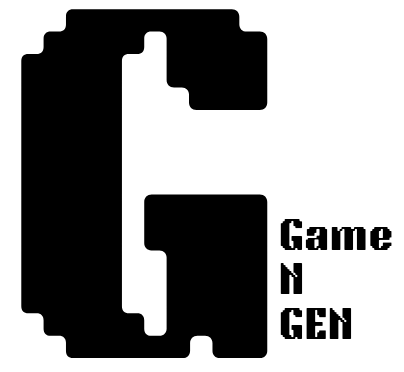Hey there! So, you want to make your own game engine in C++? That’s amazing! It might sound challenging, but trust me, with some determination and the right steps, you can totally do this. Think of this as your personal guide to starting your journey into game development. We’ll take it one step at a time, and I’ll make sure you understand everything clearly. Let’s dive right in!
Table of Contents

1. What Exactly Is a Game Engine? to Make Your Own Game Engine
Before we start coding, let’s talk about what a game engine actually is. A game engine is basically the backbone of a game. It’s the software framework that does all the heavy lifting for you—drawing the graphics, handling the physics, managing user inputs, and playing the sounds. Popular game engines like Unity and Unreal do all of this, but by building your own, you’ll learn so much more about how games work and have the freedom to create something unique.
2. Set Up Your Tools
To build your game engine, you need the right tools. Here’s what you’ll need:
- IDE (Integrated Development Environment): This is where you’ll write your code. I recommend using Visual Studio or CLion since they’re great for C++ development.
- Libraries: You’ll need some libraries to help you out. For graphics, you can use OpenGL or DirectX. For handling input, try SDL or GLFW. For audio, FMOD is a good choice.
- Version Control: Version control helps you track changes. Git is perfect for this, and it’ll be super useful as your project grows.
3. Start Small: Build the Basics
The first step in building your own game engine is starting small. Don’t worry about creating a huge game right away—focus on getting the basics down first. Here’s what you should start with:
a. Create a Rendering Engine
A rendering engine is what draws the graphics on your screen. Your first task is to create a window and draw a simple shape—like a triangle. It sounds basic, but it’s an important step because it teaches you about vertices, shaders, and how the graphics pipeline works. You can use OpenGL or DirectX to do this.
b. Handle User Input
Next, let’s make things interactive! You need to handle user input, like key presses and mouse movements. Libraries like SDL or GLFW can make this a lot easier. You can start by making an object move across the screen when you press the arrow keys.
c. Build a Game Loop
The game loop is the heart of your game engine. It’s what makes everything work together. It constantly updates the game logic, handles user inputs, and draws the scene. A simple game loop looks like this:
This loop will keep running as long as the game is active. It’s what keeps your game feeling smooth and responsive.
4. Add More Features
Once you have the basics down, you can start adding more features to your game engine. Here are some ideas:
a. Physics Engine
Want to make objects move realistically? Add a physics engine! This will help you handle things like gravity, velocity, and collision detection. You can either use a library like Bullet Physics or create your own simple physics rules.
b. Scene Management
To manage all the objects in your game, you’ll need a way to keep them organized. This is where a scene graph comes in. It helps you manage everything efficiently so that updating and rendering objects is faster and easier.
c. Scripting Support
To make developing your game easier, you can add scripting support using a language like Lua. This way, you can create game logic without having to rewrite or recompile your C++ code every time you make a change.
5. Debugging and Optimization
Debugging is a big part of game engine development. You’re bound to run into problems, but that’s okay—it’s all part of the learning process. Use tools like Valgrind for finding memory issues and RenderDoc to debug graphics problems. Once your game is running, optimization is key. You want your engine to run smoothly on different hardware, so focus on reducing memory usage and optimizing rendering.

6. Packaging Your Game Engine
After you’ve built all the core features, think about making tools to make your engine even more useful. A level editor can help you visually design game levels, while a build system can help compile the game easily. These tools will make your engine feel more complete and save you a lot of time.
7. Learning Resources
Creating a game engine is a big project, and you’re going to need some help along the way. Here are some resources that can be super helpful:
- Books: “Game Engine Architecture” by Jason Gregory is a great read if you want to understand how professional game engines work. “Real-Time Rendering” by Tomas Akenine-Möller is another great book if you want to dive deep into graphics.
- Online Courses: Websites like Udemy and Coursera have courses on game development and C++ that can really help.
- Communities: Check out forums like r/gamedev on Reddit. There are a lot of people there who are doing the same thing you are, and they can offer advice, feedback, and encouragement.
also read: Top 5 tools for game developers
I’m a beginner, and building a game engine feels overwhelming. Where should I start?
Hey, I totally understand that! Start small—begin by setting up a basic rendering engine. Get a window on the screen and draw a simple shape like a triangle. Once you get that down, you’ll feel more comfortable adding more complex features. The key is to break it down into small, manageable steps and take it one piece at a time. You got this!
Do I need to know advanced C++ to make a game engine?
Not at all! You don’t need to be a C++ master right away. You just need to know enough to get started, and as you build, you’ll naturally learn more advanced concepts. The best part about this journey is that you’ll pick up the skills as you go. Focus on learning by doing, and you’ll be surprised at how much you’ll grow.
Why should I create my own game engine instead of using an existing one like Unity or Unreal?
Great question! Unity and Unreal are amazing, but building your own engine gives you complete control. It helps you understand every detail of how games work—from rendering graphics to managing memory. Plus, the satisfaction of seeing your own engine in action is unbeatable. If you love understanding things at a deep level, making your own engine is a fantastic way to learn.
What kind of games can I make with my own game engine?
You can start with something simple—like a 2D platformer or a basic 3D shooter. The games you can create will depend on the features you add to your engine. Initially, keep it simple, then as you build more complex parts like physics or lighting, you can create more sophisticated games. Remember, it’s a learning journey, so start small and keep adding new features as you go!
How do I debug my game engine when things go wrong?
Debugging can be tough, but it’s also where you learn the most. Use tools like Valgrind to catch memory leaks and RenderDoc to troubleshoot graphics issues. If your engine crashes, try to narrow down where it’s happening by adding log statements. And if you get stuck, don’t be afraid to ask questions in forums—there’s a huge community out there ready to help.
How long will it take to build a basic game engine?
It really depends on how much time you put in. If you work on it a few hours a week, you could get a basic engine up and running in a few months. But don’t rush it—this is a learning process. Enjoy each small victory, like getting a shape to render or seeing a character move with input. Celebrate each milestone, no matter how small!
I heard about scripting support—do I need it right away?
You don’t need scripting right away, especially when you’re just starting. Focus on building the basic features first. Once you’re comfortable with the engine’s core parts, adding a scripting language like Lua can make things much more flexible. It’s a nice addition, but it’s definitely not a requirement for your first version of the engine.
What resources do you recommend for learning more about game engines?
There are some great books like “Game Engine Architecture” by Jason Gregory, which explains a lot about professional game engines. Online platforms like Udemy or Coursera have good courses too. Also, don’t forget about community forums like r/gamedev—it’s full of people just like you who are learning, sharing, and helping each other out.


1 thought on “How to Make Your Own Game Engine in C++”